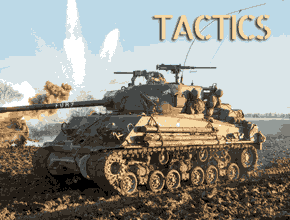To bounce on the Somua MCG seen on truck encyclopedia, here is one of the captured vehicle variants made by Baukommando Becker. This workshop managed to equip most of the reconstituted 21st Panzerdivision after it was decimated in North Africa. Most of this "zoo" of improbable vehicles, came from local captured French vehicles. Among which was the Somua MCG half track artillery tractor developed in 1927. With close to 1500 (more for some authors) produced, many were available for such conversions. Apart a multiple mortar and a rocket launcher variants, the 7.5cm PaK40 auf Somua MCG S307(f) was the most heavily armed of the MCG conversions, in 1943. Production numbers are still debated today, but they were not appreciated, being completely underpowered, seeing action notably in Normandy in the summer 1944.
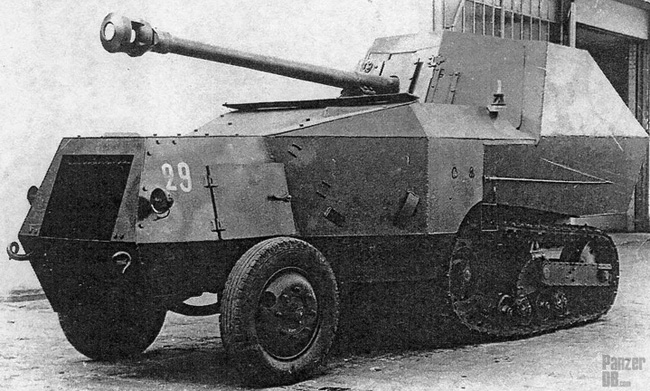
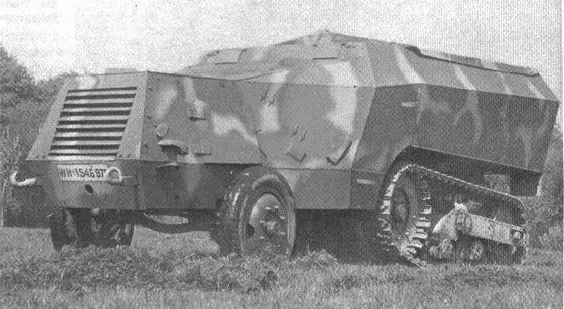
Mittlere Schützenpanzerwagen S307(f) Pionier-Panzerwagen auf Fahrgestell S307(f), initial armoured vehicle made on the Somua MCG by Baukommando Becker.
The Germans captured a lot of French equipment after the surrender of 1940. Many of these vehicles were largely obsolete. Then enters the workshops in Versailles led by Major Alfred Becker, operating from 1942 onwards. The Baukommando produced a series of Beutepanzer ("captured armored vehicles"): from Hotchkiss and Lorraine chassis notably but practically any usable French half track or tracked chassis in the inventory. Many vehicles were rebuilt as self-propelled artillery or anti-tank, command or specialized vehicles. Some were armed with 75 mm PaK 40 cannons, 105 and 150 mm howitzer, rocket launchers (self-propelled Nebelwerfer) or troop and engineers carriers. Workshops received armor and other equipments and provided units that could not be supplied, as most gear went for the eastern front, the west had "scraps".
While some of the vehicles produced were assigned at first to the Eastern Front or Tunisian front, the dire state of Western Panzer Artillery Brigades led to the creation of the Schnelle Brigade West, from which the 21st Panzer Division was created, after its total destruction in Tunisia. Becker himself became commander of the assault gun battalion or Sturmgeschütze bridgade. Alfred Becker was an engineer and reserve officer in the artillery in the First World War. In the interwar period, he founded Alfred Becker AG in Bielefeld. By 1938, his workshops converted already Panzer IV chassis, to mount 150 mm guns, creating the Hummel. With the Panzer II, he created a 105mm vehicle, the Wespe.
As part of the 227th Infantry Division in 1940 he took part in the invasion of Belgium, the low countries and French Campaign. After victory was secured, his division was stationed at Le Havre. He started to recover various abandoned British chassis and after recreating an engineering unit,he started a wave of adaptations and reconversions. In 1942, he was reassigned on the Eastern Front to see the needs of the Wehmacht there, and then sent to Spandau at the Alkett factory, helping them convert to convert French Lorraine tankettes into self-propelled guns. Promoted by Hitler in September 1942, he return to France, tasked to convert all the French vehicles captured 1940, setting up his command at Maisons-Laffitte, a former French military camp, chosen for its proximity to the Hotchkiss factories.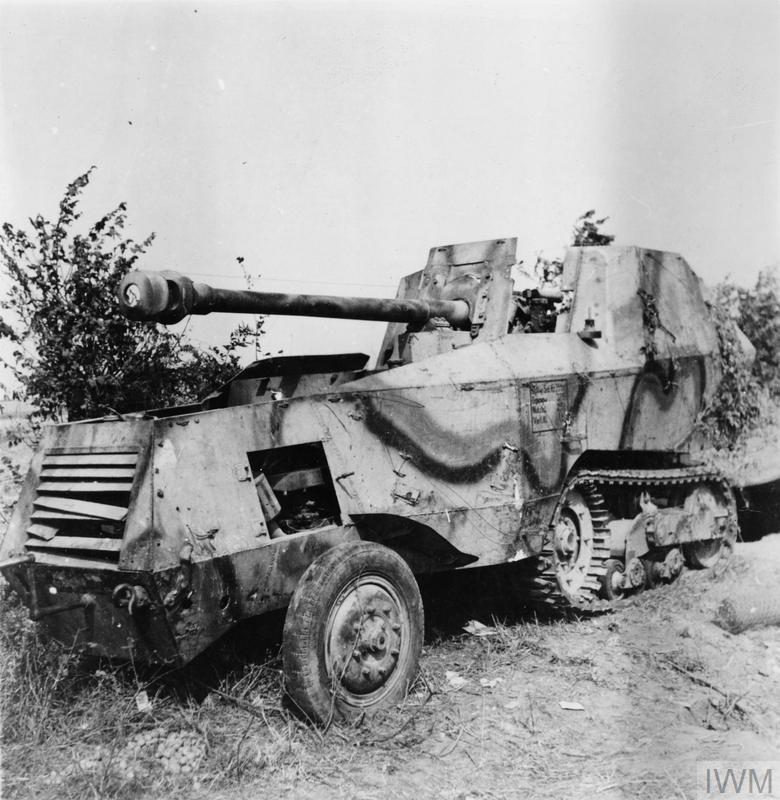
Initially, the Germans used the Somua S307(f) for towing artillery pieces, notably the Krupp 105 mm howitzer. In 1943, in order to further increase armor available in France and in particular for the Western front, he laid his hands further down the list, after fully tracked vehicles, to half-tracks, of French French possessed several thousands in workable conditions, mostly trucks and artillery tractors. SOMUA halftracks were soon, like the Latil, Citroën and others, requisitioned for conversion. The Somua MCG and the more powerful and recent MCL started to be converted into a family of vehicles, like the Mittlere Schützenpanzerwagen S307(f), with had an armored body. The vehicle was standardized and declined into five main variants. One became a troop transport, another an engineers carrier, another a mortar carrier setup like a rocket launcher, and another as a proper rocket launcher vehicle. But the most outstanding was an antitank 7.5 cm armed version.
A total of sixteen S307(f), the denomination of the Somua MCG, were converted into a Panzerjäger, by adding a PaK 40 in an armoured body. This PaK 40 conversion brought the S307 to a whole new level, with the gun itself separated from its split trail, and its basis installed on a floor ring over the flatbed platform at the rear, resting in part over the tracks. The driver had a new, much lower, fully armoured cabin with a small exit door and a hatch above, plus an access of the gun crew by the roof. The original PAK 40 gun shield was retained and a new, full armor was built around the driving compartment. However no change was made to the engine of this Panzerjäger, as as such, the weakly powered (50-60 hp) MCG proved completely overwhelmed by the weight of the antitank gun plus the armoured body, resulting in severely limited speeds and agility. The engine also often broke down due to the strain.
Performance wide, muzzle velocity: was about 790–990 m/s depending on ammunition.
Effective range was 1,800 m (in direct fire). It Could penetrate ~100 mm of armor at 500 m with standard AP rounds.
Ammunition types: were either the:
-PzGr 39 (APCBC – Armor Piercing Capped Ballistic Cap)
-PzGr 40 (APCR – Armor Piercing Composite Rigid)
-SprGr 34 (HE – High Explosive)
Originally it was towed by the Sd.Kfz. 11 in particular, it had a split-trail carriage for a wide traverse. There was shield to protect crew from small arms fire and shrapnel. It is a recoil-operated, breech-loaded design. It is widely regarded as one of the best German antitank guns of the war. Captured Pak 40s were used by Allied and Axis forces alike. Post-war, some remained in use by Eastern European and Middle Eastern countries. Rheinmetall-Borsig manufacured over 23,000 units.
en.namu.wiki
spearhead1944.co
reader.exacteditions.com
truck-encyclopedia.com Somua MCG
fingolfen.tripod.com
Somua MCG/MCL on kfzderwehrmacht/
scalemates.com
A Laborious half Track Tank Killer

Introduction: The Somua MCG S307(f).
The S307(f) was the waffenamt designation for the French Somua MCG in German service from the winter 1940. The Somua MCG was a French half-track tractor for artillery which began as an armoured recovery vehicle, notably for the small vintage Renault FT tank. It was still used in this role in 1940, but the bulk of the vehicles produced, of the MCG 4, 5 and 11, differing in configuration, operated as artillery tractors, mostly for ordnances up to the 155 mm field howitzer M17. The design dated back from 1927 and was produced until June 1940. It was woefully obsolete by then. The first version had a 50 hp engine, the latter versions had a 60 hp. The replacement Somua MCL had a 80-90 hp and c800 were made by June 1940.About the Baukommando Becker

Mittlere Schützenpanzerwagen S307(f) Pionier-Panzerwagen auf Fahrgestell S307(f), initial armoured vehicle made on the Somua MCG by Baukommando Becker.
The Germans captured a lot of French equipment after the surrender of 1940. Many of these vehicles were largely obsolete. Then enters the workshops in Versailles led by Major Alfred Becker, operating from 1942 onwards. The Baukommando produced a series of Beutepanzer ("captured armored vehicles"): from Hotchkiss and Lorraine chassis notably but practically any usable French half track or tracked chassis in the inventory. Many vehicles were rebuilt as self-propelled artillery or anti-tank, command or specialized vehicles. Some were armed with 75 mm PaK 40 cannons, 105 and 150 mm howitzer, rocket launchers (self-propelled Nebelwerfer) or troop and engineers carriers. Workshops received armor and other equipments and provided units that could not be supplied, as most gear went for the eastern front, the west had "scraps".
While some of the vehicles produced were assigned at first to the Eastern Front or Tunisian front, the dire state of Western Panzer Artillery Brigades led to the creation of the Schnelle Brigade West, from which the 21st Panzer Division was created, after its total destruction in Tunisia. Becker himself became commander of the assault gun battalion or Sturmgeschütze bridgade. Alfred Becker was an engineer and reserve officer in the artillery in the First World War. In the interwar period, he founded Alfred Becker AG in Bielefeld. By 1938, his workshops converted already Panzer IV chassis, to mount 150 mm guns, creating the Hummel. With the Panzer II, he created a 105mm vehicle, the Wespe.
As part of the 227th Infantry Division in 1940 he took part in the invasion of Belgium, the low countries and French Campaign. After victory was secured, his division was stationed at Le Havre. He started to recover various abandoned British chassis and after recreating an engineering unit,he started a wave of adaptations and reconversions. In 1942, he was reassigned on the Eastern Front to see the needs of the Wehmacht there, and then sent to Spandau at the Alkett factory, helping them convert to convert French Lorraine tankettes into self-propelled guns. Promoted by Hitler in September 1942, he return to France, tasked to convert all the French vehicles captured 1940, setting up his command at Maisons-Laffitte, a former French military camp, chosen for its proximity to the Hotchkiss factories.
Design of the 7.5cm PaK40 auf Somua MCG S307(f)

Initially, the Germans used the Somua S307(f) for towing artillery pieces, notably the Krupp 105 mm howitzer. In 1943, in order to further increase armor available in France and in particular for the Western front, he laid his hands further down the list, after fully tracked vehicles, to half-tracks, of French French possessed several thousands in workable conditions, mostly trucks and artillery tractors. SOMUA halftracks were soon, like the Latil, Citroën and others, requisitioned for conversion. The Somua MCG and the more powerful and recent MCL started to be converted into a family of vehicles, like the Mittlere Schützenpanzerwagen S307(f), with had an armored body. The vehicle was standardized and declined into five main variants. One became a troop transport, another an engineers carrier, another a mortar carrier setup like a rocket launcher, and another as a proper rocket launcher vehicle. But the most outstanding was an antitank 7.5 cm armed version.
A total of sixteen S307(f), the denomination of the Somua MCG, were converted into a Panzerjäger, by adding a PaK 40 in an armoured body. This PaK 40 conversion brought the S307 to a whole new level, with the gun itself separated from its split trail, and its basis installed on a floor ring over the flatbed platform at the rear, resting in part over the tracks. The driver had a new, much lower, fully armoured cabin with a small exit door and a hatch above, plus an access of the gun crew by the roof. The original PAK 40 gun shield was retained and a new, full armor was built around the driving compartment. However no change was made to the engine of this Panzerjäger, as as such, the weakly powered (50-60 hp) MCG proved completely overwhelmed by the weight of the antitank gun plus the armoured body, resulting in severely limited speeds and agility. The engine also often broke down due to the strain.
Layout
So in short, the 7.5cm PaK 40 auf Mittlere Schützenpanzerwagen S307(f) had a crew of four, the driver, and the three men in general neeed to work out the single 7.5cm PaK 40 L/46 antitank gun, and that was the sole armament on board apart the crew's personal weapons. The final vehicle, with its armour are rear mounted gun, weighted 8.5 tons versus 6,8 tonnes on the original half track. This armour was probably around 6 mm thick, and lightly sloped. This vehicle reeached 5.76 meters, for a width of 2.1 meters and height of 2.04 meters. Overehead protection was only for the driver, the gun crew was only protected from the front b the original gun shield, and from the sides and rear. The vehicle had an open top fighting compartment, not immune to shrapnels.Power Unit and performances
The original engine was kept, a SOUMUA 4 cylinger 4.7 liter rated for 50-60 hp depending on the model, coupled with a gearbox with five forward and one reverse speed. Top speed is sometimes noted to be 36 km/hr but it's very unlikely as the original Souma MCG for comparison only was supposed to make 31 kph while being lighter by two tons. So 26 kph was probably more likely. In any case, this was fairly slow for the "schelle brigade West". The range, based on the same 80 liter tank, was probably less than 150 km given that the original vehicle, with a consumption of a 47 liters/100 km was already 180 km, light. The 7.5cm PaK40 auf Somua MCG S307(f) was fitted with a radio FuG Spr d. It was supposed to be deployed by platoons of four vehicles, which gave four platoons or a brigade.Performances of the 7.5 cm AT gun
The gun traverse was probably no more than 30 degree left and right. The 7.5 cm Pak 40 (Panzerabwehrkanone M1940) antitank gun was one of Germany's most important and effective anti-tank guns during World War II. It was developed in 1939–1941, in response to encounters with heavily armored Allied tanks like the Soviet T-34 and KV-1. It also replaced the underpowered 5 cm Pak 38, which was becoming ineffective by 1941. It entered large-scale service starting in 1942 on the Eastern Front.Performance wide, muzzle velocity: was about 790–990 m/s depending on ammunition.
Effective range was 1,800 m (in direct fire). It Could penetrate ~100 mm of armor at 500 m with standard AP rounds.
Ammunition types: were either the:
-PzGr 39 (APCBC – Armor Piercing Capped Ballistic Cap)
-PzGr 40 (APCR – Armor Piercing Composite Rigid)
-SprGr 34 (HE – High Explosive)
Originally it was towed by the Sd.Kfz. 11 in particular, it had a split-trail carriage for a wide traverse. There was shield to protect crew from small arms fire and shrapnel. It is a recoil-operated, breech-loaded design. It is widely regarded as one of the best German antitank guns of the war. Captured Pak 40s were used by Allied and Axis forces alike. Post-war, some remained in use by Eastern European and Middle Eastern countries. Rheinmetall-Borsig manufacured over 23,000 units.
Production disputes
Of this antitank variant, up to 72 conversions were made depending on the source, carried out by Baukommando Becker. It seems that 72 were scheduled to be converted, but 48 were later converted as ammunition supplier (Munitions Zugkrafwagen auf SPW S307 (f)) so that left 24 vehicles in the AT role by 1944, assigned to the 21st PzD, not sixteen as most sources states. The figure of 72 is often attributed to Walter J. Spielberger - Beute-Kraftfahrzeuge und -Panzer der deutschen Wehrmacht, Motorbuch Verlag Stuttgart, 2nd edition, year of publication 1992.MCG specifications | |
| Dimensions | 5.76 m x 2.1 m x 2.04 m. |
| Total weight, battle ready | 8.5 tonnes |
| Crew | 4 |
| Propulsion | 4 cyl., gas. water cooled 4.712L, 55 hp |
| Suspension | Leaf springs |
| Maximum speed | c30 kph |
| Range | c150 km (180 liters gas.) |
| Armament | 7.5 cm PAK 40 AP Gun |
| Armor | 6 mm |
| Total production | 16* |
Links
en.namu.wiki
spearhead1944.co
reader.exacteditions.com
truck-encyclopedia.com Somua MCG
fingolfen.tripod.com
Somua MCG/MCL on kfzderwehrmacht/
scalemates.com
.png)
The base Somua MCG S607(f) schlepper in Italy, 1943.
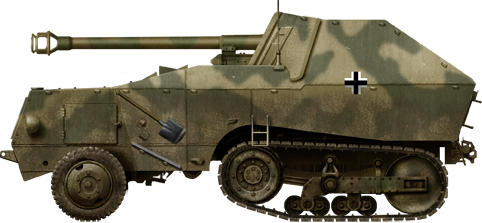
Fahgestell Somua MCG, 7.5cm PAK 40 PanzerJäger, Normandy June 1944.
Gallery
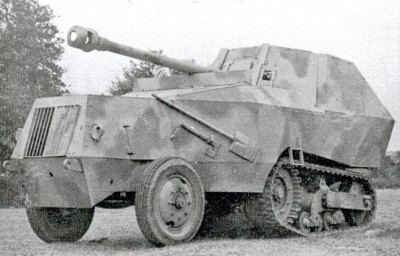
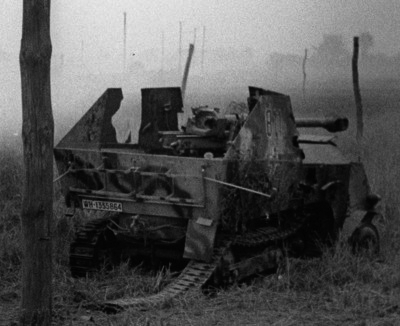

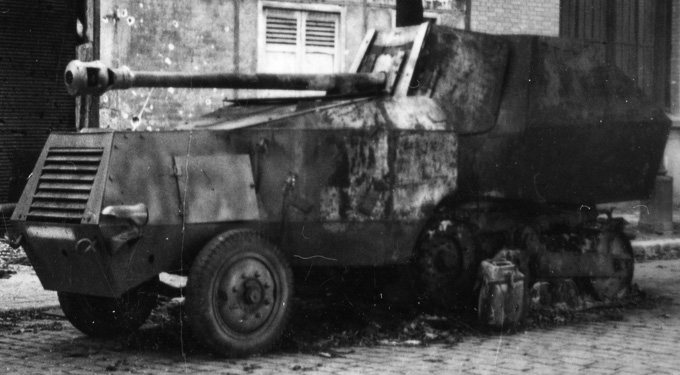
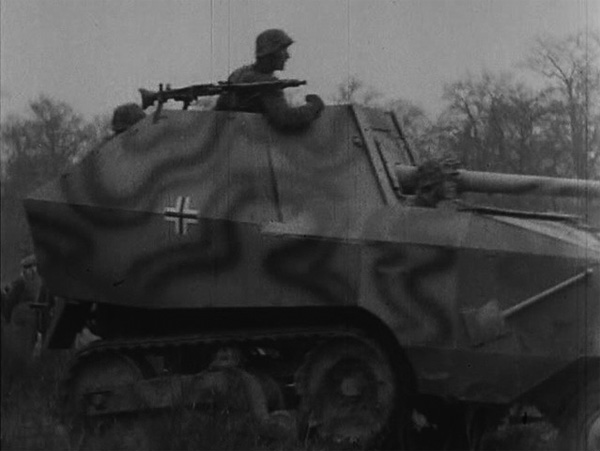
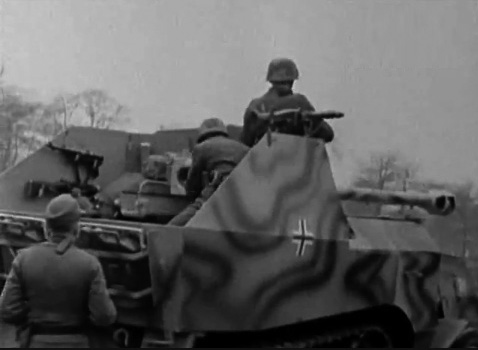
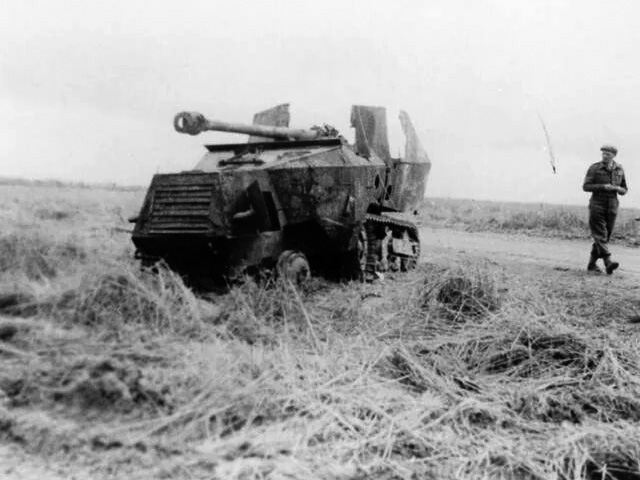

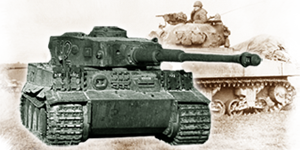
WW2 Tanks




























WW2 tanks posters
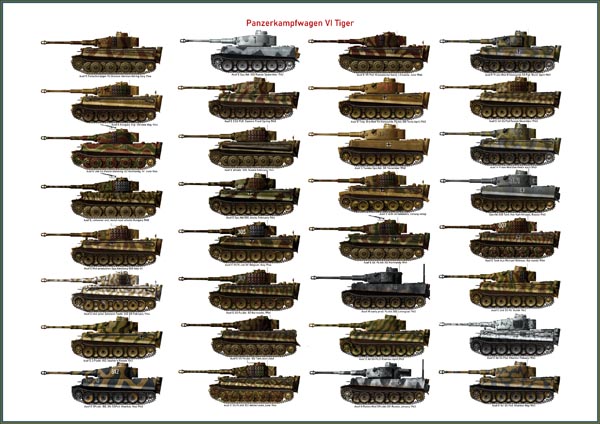
All Tiger tanks liveries.
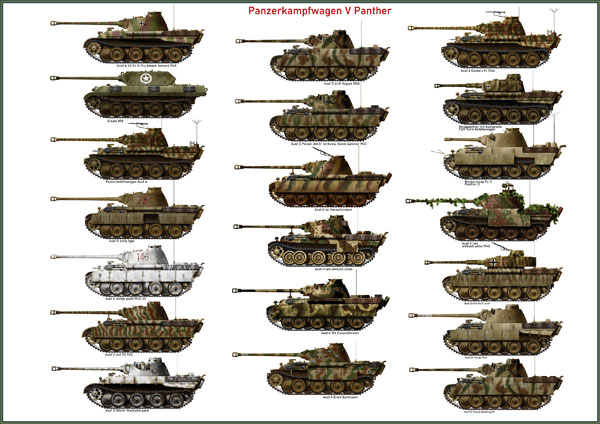
Panther liveries and variants
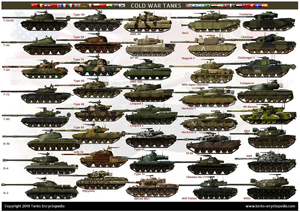
WW2 Armour - All tanks
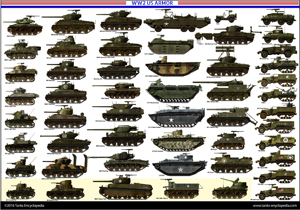

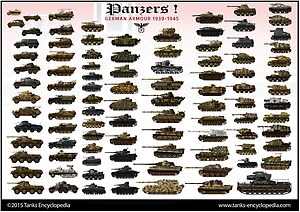








Tanks aces and single tanks series

Find more there
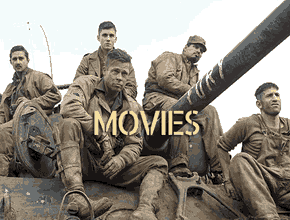
Museums, Movies, Books & Games
The Tanks and Armor in pop culture
Tanks and armored vehicles in general are only really grasped when seen first person: The mass, the scale, it's all there. Explore also the way tanks were covered in the movie industry, in books and in video games.Movies:
Best tanks movie on warhistoryonline.com
On imdb.com
On bestsimilar.com/
miltours.com
liveabout.com/
watchmojo.com
Video Games:
pcgamesn.com
historyhit.com
levvvel.com
vg247.com/best-tank-games
mmobomb.com/
alienwarearena.com
